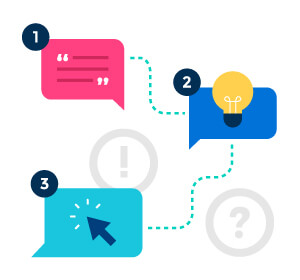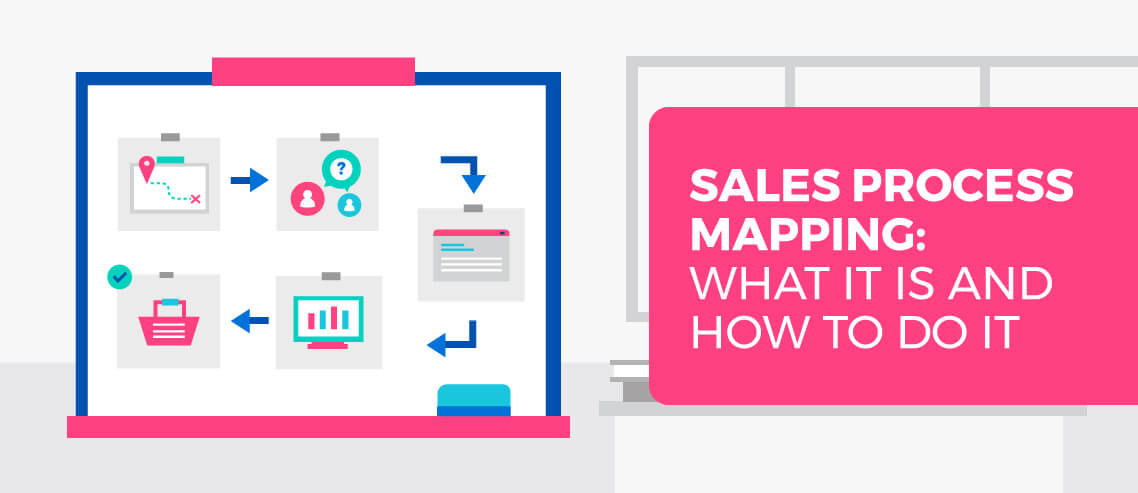The Anatomy of a Great Sales Pitch (With Examples)

Contents
Your sales pitch is arguably the single most essential piece of your sales process. It’s your mission, brand statement, business card, and company persona, all rolled into a brief, persuasive presentation. And since you only have a few seconds to make a strong impression and keep your prospect’s attention to the end, delivering a sales pitch that truly connects is no easy feat.
A sales pitch is essentially a two-way conversation between you and your prospects. It not only moves from Point A to Point B in your sales process, but it should also help you learn more about your prospects and how you can bring value to their business.
So what does a great sales pitch look like? What should it include (and avoid)? Here are seven elements of a great sales pitch that will help you make powerful connections every time you go to bat.
1. Research
Only 13% of buyers agree that salespeople truly understand their needs. That’s a pretty dismal stat; if you can’t understand your customer’s problems, you have no chance of becoming part of their solution.
Buyer personas and case studies can only go so far. You also need to demonstrate to the buyer that you get them and offer up a way to fix their problems, otherwise you’re not going to connect with them in your sales pitch.
Effective sales pitches shouldn’t be cookie-cutter scripts that never change – they should address your buyer’s needs. Savvy salespeople know how to tailor their delivery depending on the prospect’s company, priorities, and end goals.
The only way to do this is to research. Before you utter a single word, you need to know who you’ll be talking to. What do you know about their company and industry? Who are the clients they serve? What pain points do they experience that your company could alleviate for them?
This step is especially important if you’re talking to someone who isn’t familiar with you or your company. If you don’t have brand trust to fall back on, you’ll need to work even harder to prove yourself.
Showing that you know something about your prospect and their needs in advance tells them that they’re more than just another sale to you, and can go a long way in getting them to hear you out.
2. Introduction
Most prospects can smell a sales pitch coming before you finish saying your name. Unless you can grab their attention immediately, there’s a good chance they’ll tune out the pitch you worked so hard to create.
Get their attention by starting with them and leave yourself out of it for the moment. For example, you could ask a question about something that’s unique to their company and is completely independent from your own priorities, such as an award they recently won or a new account they just landed.
Your introduction should also build up the curiosity factor. Show you’re interested in learning about them, not in schooling them on something you think they need. If you already know everything, the prospect ultimately has nothing to contribute to the conversation and will tune you out. But if you’re asking questions, they’re more likely to engage and give you the attention you’ve earned.
Remember, sales pitches are dialogues, not monologues, so pull the prospect into the conversation early and speak directly to their needs.
3. Value Proposition
Your prospect has given you their attention, and they want to know they’re not wasting their time. So, what are you bringing to the table?
A great sales pitch includes a strong value proposition that will persuade others to believe in it just as much as you do. It highlights benefits, not features. It talks about the problems you solve that are relevant to the prospect. It emphasizes the type of customer you work with, and adds tangibility to how you help them.
Campaign Monitor is a great example:

Stripe is another good one:

In both examples, you can clearly see who the company is, what they do, who their services are for, and a few key benefits you can expect when you work with them.
4. Storytelling
Data shows that about 63% of prospects remember stories, which is why the majority of successful sales pitches are based on storytelling.
Aside from helping prospects to retain information, stories also put them directly into the picture. Rather than telling your prospect about how your product or service works, a story helps show them how they might use it to improve what they’re currently doing. Storytelling transforms vague ideas and makes them tangible.
Prospects become active participants, not just passive observers. And when they can see themselves in the storyline, they can picture themselves enjoying the successful ending.
For example, a prospect may feel confused about what an average 35% hiring efficiency improvement means, but they can probably envision the impact that saving $150 per new hire and speeding up onboarding by two weeks could have.
5. Social Proof
It’s not enough to talk about what you can do. Your prospects want proof, or at the very least, reassurances that you can follow through on your promises.
There are a few powerful ways you can get them to believe you.
First, use storytelling to talk about how your current customers are using your product and the results they’ve received. Mention what they were doing before you came along and how you’ve helped them improve. Summarize your case studies to highlight the most important takeaways and make them easier to digest.
Testimonials are also helpful tools because they come directly from your satisfied customers, who will talk about why they like doing business with you and how you’ve helped them, and will even recommend you to prospects.
You should also provide research and data that add credibility to your claims. An industry expert or reputable source can help you link specific stats or benefits to your product and give it more credibility.
Finally, you should offer your own personal guarantee to demonstrate your confidence in what you’re selling. This might be a free trial, free shipping, a money-back guarantee, or something else that will give them more confidence to say ‘yes’.
6. Unexpected Value
Part of your job as a sales rep is to discover the problems your prospects experience and see how your solution can help. Most sales reps stop right there; but what if there are other, bigger issues that are left to be discovered, even ones the prospect may know nothing about?
Your job isn’t just to rehash the problems they know they have and present solutions they may already know exist. Rather, take it a step further by introducing an unexpected need or value that will move the prospect into territory they haven’t yet considered.
Don’t tell them what they already know. Persuasion only occurs when there is a level of uncertainty. If your prospect has overlooked something, hasn’t considered something, or has underestimated something to some degree, they’re more likely to be open to how you can help.
7. Specific Request or Action
Your sales pitch started by focusing on your prospect. You’ve already addressed their problems, delivered your value, introduced ideas they may not have considered, and backed up your claims with proof.
Now, you’ve arrived at the entire purpose of your sales pitch: what you want your customer to do next.
Your pitch should end with an invitation to take action. Give them clear direction on what to do next and make it easy for them to do it. You’ve put a lot of effort into getting your prospect to this point, and the worst thing you can do is leave it to chance.
Surprisingly, 85% of salespeople don’t actually ask for the sale. Some are afraid of rejection. Others think they’ve made it obvious enough as to what they want the customer to do. Some salespeople simply don’t know how to take the conversation to this stage – and that’s a problem.
Since 90% of buyers won’t buy unless you ask them to, you need to carry your sales pitch all the way through to the end. If you’ve done a thorough job up until this point, there’s no reason to let fear stop you now.
Best Practices for a Knockout Sales Pitch
Before we dive into specific sales pitch examples, here are a few best practices to follow to make sure your sales pitch is a knockout:
Keep It Short
You’re asking your prospect for one of their most valuable possessions: their time. You’re competing with their emails, meetings, clients, and all the other things they have going on at that same moment.
Keeping your sales pitch short not only helps you save time, but also shows that you value theirs. You’re also likely to get farther in your pitch when you aren’t delivering a 10-minute monologue.
Keep It Simple
Clunky, complicated words can bring your prospect out of the moment. They stop listening to you because they’re trying to figure out what you just said. And once they’re lost, they might not bother to play catch-up.
Use simple language that flows easily, and avoid information overload. If you can say the same thing in fewer words without losing impact, do.
Practice Your Delivery
You don’t want to sound tired or over-rehearsed; you do want to sound confident and trustworthy. Practice your sales pitch sufficiently to ensure it flows well and you’re not stumbling over your words.
If you’re sending a cold pitch via email, read your message out loud to see if it sounds too long, too complicated, or too confusing.
Anticipate Questions
At the end of your sales pitch, you should leave a space to continue the conversation. This is one of the most tedious parts for sales reps because this is where you start to go off-book. You don’t know where the conversation will head next, and oftentimes sales reps will lose control of the dialogue.
To combat this, be forward-thinking in the questions or objections your prospects may have, and know how to respond. Remember that having an objection doesn’t mean they’re not interested or won’t buy — in fact, it could indicate the opposite.
Follow Up
The conversation doesn’t stop once your sales pitch ends. If you didn’t convert them on the spot, follow up with them to stay top of mind and continue building the relationship. Studies show that 92% of sales reps give up after the first ‘no’, but four out of five prospects will say ‘no’ four times before saying ‘yes’.
Sales Pitch Examples
So there’s the basic anatomy of a great sales pitch. Now let’s see how other companies have put all the pieces together to create an effective sales conversation with their prospects:
Freshchat

This cold email from Freshchat combines several elements of an effective sales pitch. For starters, it’s mostly storytelling that puts a real person’s experience into perspective. It offers specific details that explain why the sales rep is reaching out to the company. The rep has done their research on the prospect and provides a clear call to action to continue the conversation.
The subject line also sparks a bit of curiosity. The rep is asking a quick question rather than stating their reason for the email. The recipient has to open the email to find out what that question is.
Freshchat used this template to send 80 emails. Out of those, 48 people (60%) opened the email, seven people (8.8%) clicked at least one link in the email, and 14 people (17.5%) responded to it.
Brightwheel

Brightwheel’s debut on ABC’s Shark Tank is a prime example of how to deliver a consumer-focused sales pitch on a complicated product (in this case, it’s an app). You can see the full video here, but here’s a recap of Brightwheel CEO Dave Vasen’s shining moments:
- He’s completely focused on the benefits and value the app brings to each type of customer
- He talks about who uses the product (families, schools, daycares, etc.)
- He talks about Brightwheel’s competitive advantage (they’re pretty much the only company that offers this product)
- Brightwheel carries a low risk (right now, it’s free and will launch a premium product later)
- He invites the Shark Tank panel to take advantage today
Not once does Vasen talk about the complicated tech happening behind the scenes. He stays focused on the app’s value and benefits and makes it easy for everyone to understand, even if they don’t have a technology background.
Don’t Strike Out – Connect
Creating a sales pitch is one of the most important things you’ll do in your sales organization. It not only sets you apart from your competitors, but it also charts the course for a productive, effective two-way conversation that helps you build better connections.
Keep in mind that it can take some testing and tweaking to see what works. Pay attention and document how people respond so you can create predictable, repeatable success that will help you avoid striking out, and start hitting home runs.





